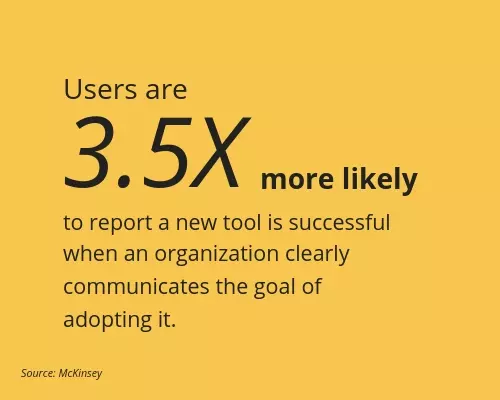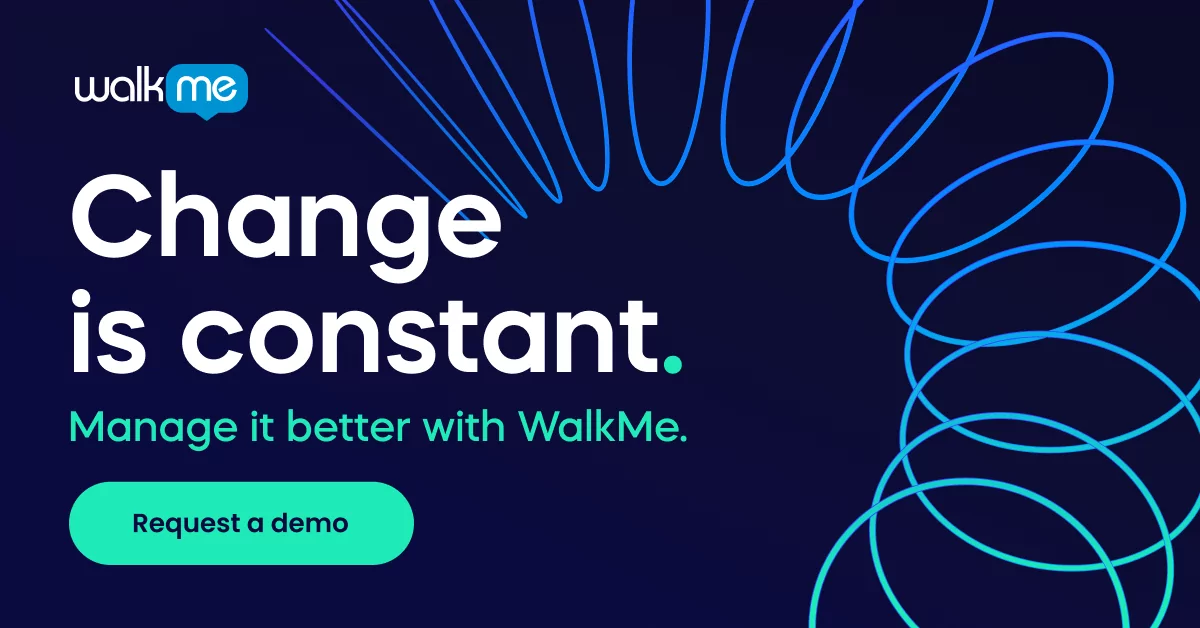When you get to work in the morning, turn on your computer, and start your day, you have a list of tasks waiting for you. With a fresh cup of coffee and a great software deck, you should be ready to go.
You have emails to write, projects to draft, and meetings to attend, and each task requires several different software applications. You don’t necessarily know if you use your apps “the best way” but the last thing you have time for is figuring out if there’s a better way to get each task done. Better to just do it the way you’ve always done it.
Because your to-do list provides you with enough to worry about, you expect your software to simply support and enable your tasks. The thought of trying something new or different is irritating. You don’t want to have to “figure it out” because you expect your user-experience to deliver intuitive and self-explanatory guidance. But in reality, finding the best way to complete a task in an app is not so easy, and so you end up engaging as little as possible with your tools.
We open app after app each day, usually using them to perform the same narrow list of tasks each time, and not necessarily utilizing the software fully. We are simply too busy for software adoption.
What is the difference between usage and adoption and why does it matter?
To realize value in software, it’s imperative to monitor its usage. This is not a new concept and in order to justify the expensive investment that new software demands, CIOs know a proven positive ROI is essential. This requires monitoring how users (often employees) engage with a given software using analytics. How often does a user open the app? How many events occur during that user’s time in the app? Software usage is the basic assessment of how a user interacts with the software.
If software usage is how frequently or for what purposes the software is used, software adoption is how fully utilized the software is. An employee might use Salesforce every single day to create and assess one report. Technically, the usage would be very high. This user opens Salesforce every single day and performs an essential task by creating his report. But is this realizing the full capabilities of Salesforce? Does this user’s daily minimal usage really justify the cost of having Salesforce?
The user doesn’t monitor his usage – he doesn’t care as long as he’s completing his tasks, but someone cares. The ROI on that Salesforce user demands software adoption.
When you invest in software for your company, you are promised a sky-high list of capabilities, functions, and processes that are supposed to deliver huge value. But purchasing the software, and adopting the software are two very different stages of going digital. It is the gap between software usage (which can be minimal) vs. software adoption that is a potentially fatal lynchpin for businesses.
Why is digital adoption the goal?
According to WalkMe’s Complete Glossary of Digital Adoption, digital adoption is:
A state in which digital tools are being used as intended, and to their fullest extent.
Digital adoption occurs when a business invests in new technology, adopts a digital mindset, and evolves processes so users can maximize proficiency on a given software. By definition, adopted software should simplify task completion, improve productivity, and protect ROI.
To ensure that your software doesn’t turn into shelfware, aiming for software usage isn’t good enough. Becoming a digitally-enabled company depends on leadership to set the tone for the company’s digital culture. If employees are expected to adopt the software on their deck, they need to be enabled to do so.
Measuring software adoption
Many applications offer basic insights into their usage, but it’s difficult to get a full assessment of adoption. The main reason is that each app has a vested interest in its users believing that the product is essential and is being utilized fully. You can’t really expect to get an unbiased and objective assessment of adoption from within the software itself.
This is why digitally-focused CIOs develop a digitally determined strategic plan.
When creating a strategy for digital adoption, keep in mind these three goals:
Identify your adoption baseline
With your current tools, how are you currently monitoring the success of your workforce? Start with baseline data and qualitative observations to get an accurate baseline understanding of how your technology is currently being used.
Ensure all users understand the software goals
According to McKinsey, when an organization clearly communicates the goals of a new initiative, users are 3.5 times more likely to report that the new tool is successful. Don’t forget that digital transformation is about technology but it’s most importantly about people.

Think scalability
Implementing software and achieving adoption for a five-person company is a completely different animal than attempting digital adoption across a 10,000 person workforce. Strategies should always be scalable. If your plan works for yourself and a handful of employees, don’t assume that it’s a proven method for digital success.
Digital adoption solutions
Adopting software is a huge challenge, even for Fortune 500 companies that seem to be fully digitally-enabled. But the first step to solving a problem is admitting that there is a problem. So how are top industry leaders addressing the adoption problem? Leading global research and advisory firm, Gartner, has established a new category of technology — digital adoption solutions. This category is for tools that attempt to resolve the daunting task of adoption.
Although there are several tools that claim to be digital adoption solution apps, the original, WalkMe’s Digital Adoption Platform remains the only one addressing all of the challenges that adoption poses.
For CIOs and other executives responsible for bridging the gap in their companies, software adoption is front and center on the agenda. Those that are able to zoom out and see the greater vision through a digital lens, will not only lead their companies to success but will also be leaders in realizing the potential of technology.
So tomorrow, when you drink your coffee and plan your day, make sure that your software adoption strategy is at the top of your to-do list.


